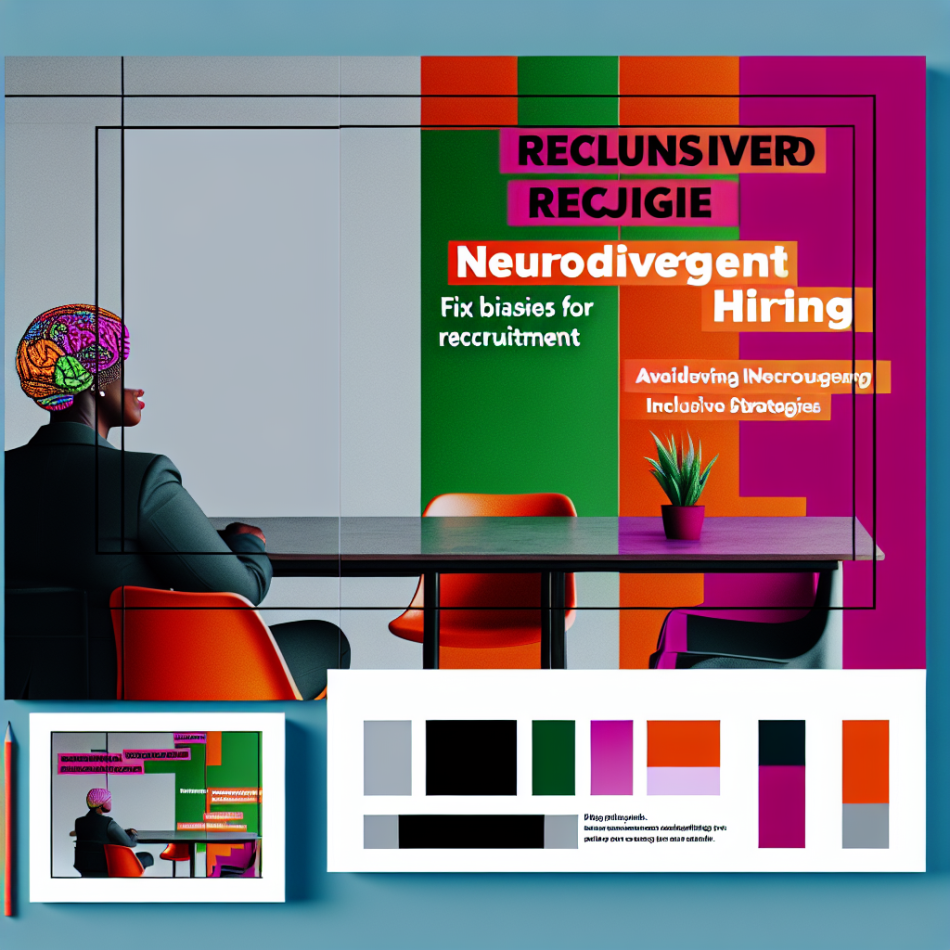Are Your Hiring Practices Unintentionally Filtering Out Neurodivergent Talent?
In today’s competitive job market, companies risk overlooking skilled candidates by relying on traditional hiring methods that inadvertently exclude neurodivergent individuals. From rigid job descriptions to interview processes tailored for neurotypical norms, unconscious biases can create barriers for those with autism, ADHD, dyslexia, or other neurodivergent traits. This article explores how outdated practices limit diversity and offers actionable strategies to build a more inclusive recruitment framework.
The Problem with Rigid Job Descriptions
Job descriptions often serve as the first hurdle for neurodivergent applicants. Phrases like “excellent communication skills” or “thrives in fast-paced environments” may seem neutral but can alienate candidates who interpret language literally or require structured workflows. For instance, someone with autism might excel in analytical roles but struggle with vague expectations around “team fit”. Similarly, listing “multitasking” as a core requirement could deter individuals with ADHD, despite their capacity for hyperfocus on specialised tasks.
To mitigate this, companies should:
- Prioritise essential skills: Differentiate between “must-have” qualifications and “nice-to-have” traits.
- Use clear, specific language: Avoid idioms or ambiguous terms like “dynamic” or “self-starter”.
- Highlight flexibility: Clarify if tasks can be adapted or if remote work is an option.
Interviews: A Neurotypical Playground
Traditional interviews heavily favour neurotypical social cues, such as eye contact, small talk, or rapid-fire responses. For neurodivergent candidates, these interactions can feel disorienting or misleading. A person with social anxiety might appear disengaged, while someone with dyslexia could stumble over written tests despite possessing strong verbal reasoning skills. Moreover, hypothetical questions (“How would you handle a difficult client?”) often disadvantage those who prefer concrete examples or require time to process information.
Alternative assessment methods include:
- Work samples or practical tasks: Evaluate skills through real-world scenarios.
- Structured interviews: Use consistent questions and scoring rubrics to reduce bias.
- Pre-interview materials: Share questions in advance to level the playing field.
Adjusting the environment also matters. Bright lighting, crowded rooms, or unstructured group activities can overwhelm sensory-sensitive candidates. Offering quiet spaces or virtual options demonstrates inclusivity.
Unconscious Bias and the Myth of ‘Culture Fit’
The concept of “culture fit” often masks hidden biases. Hiring managers may unconsciously favour candidates who mirror their own communication styles or personalities, sidelining neurodivergent individuals whose approaches differ. For example, a direct-speaking autistic applicant might be labelled “abrasive”, while a neurotypical colleague displaying similar behaviour is deemed “assertive”.
This bias extends to perceptions of competence. Neurodivergent traits like meticulous attention to detail or unconventional problem-solving are frequently undervalued. Employers might misinterpret a lack of eye contact as disinterest or dismiss a candidate’s request for written instructions as “high maintenance”.
Combatting this requires:
- Training hiring teams: Educate recruiters on neurodiversity and challenge assumptions about “ideal” candidates.
- Standardised evaluation criteria: Base decisions on measurable skills rather than subjective impressions.
- Diverse interview panels: Include neurodivergent employees in the hiring process to provide balanced perspectives.
Building a Neuroinclusive Recruitment Strategy
Creating an accessible hiring process isn’t about lowering standards—it’s about broadening opportunities. Start by auditing existing practices: Are job ads needlessly exclusionary? Do interviews assess actual job requirements or arbitrary social skills? Partnering with neurodiversity advocacy groups can provide insights, while anonymised applications reduce snap judgements based on CV gaps or atypical career paths.
Accommodations should be normalised, not stigmatised. Proactively invite candidates to request adjustments, whether that’s extra time for assessments or using assistive technology. Internship programmes targeted at neurodivergent talent, like those pioneered by Microsoft and IBM, also help bridge the experience gap many face due to systemic barriers.
Conclusion: Rethinking Talent in a Neurodiverse World
Neurodivergent individuals bring unique strengths—innovative thinking, pattern recognition, and resilience—that drive business growth. Yet, outdated hiring practices continue to filter out this untapped talent pool. By refining job descriptions, redesigning interviews, and addressing unconscious biases, employers can create equitable processes that benefit both candidates and organisations. The future of work isn’t about conformity; it’s about harnessing diverse minds to solve complex challenges. Is your company ready to lead the shift?
